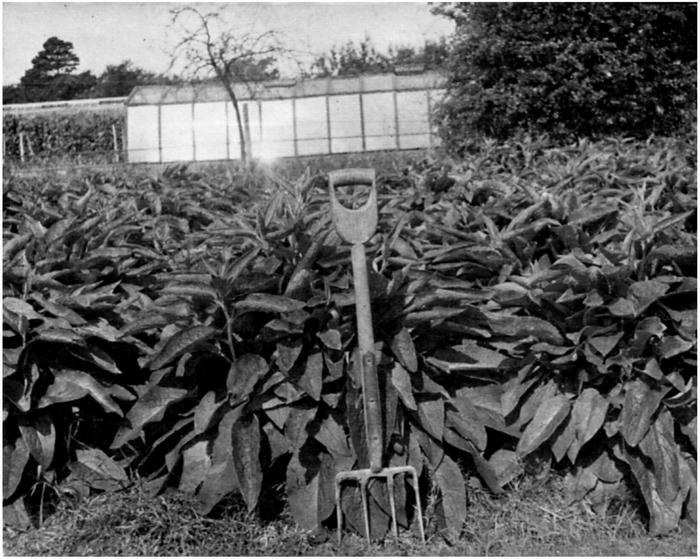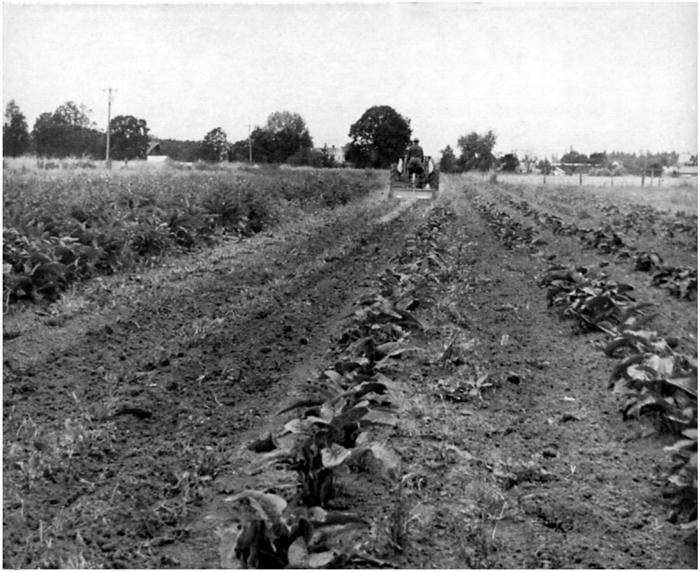Comfrey: Past, Present and Future
a.k.a. Comfrey: Fodder, Food & Remedy
Lawrence D. Hill's comfrey book is also known as Comfrey: Fodder, Food, & Remedy, which it was originally published as in 1976. The 2008 Faber Finds reprint, retitled Comfrey: Past, Present and Future, is a direct photocopy of the original book. Copies of the original currently list for over $150 on eBay and Amazon, while copies of the reprint are gradually crawling upward, with current listings at over $35 on average.
To grant some peace of mind to our visitors and customers interested in the history and cultivation of comfrey, a .pdf of the book is here for you. Click the link below to read it in a .pdf reader such as Adobe Reader.
Comfrey: Past, Present and Future
Disclaimer: Lawrence D. Hills is understood as the author of the text within (and contributors of appendices understood as authors to those respective pieces). Coe's Comfrey had, has, and will have no involvement or claim of ownership in this book. This book is made available here in recognition both of its import to the study and cultivation of comfrey, and of its limited availability in print and unlikelihood of being reprinted.
Illustrations
The .pdf has some technical issues regarding the captions of the photo plates at the end of the book, so these are included below for coherency's sake.
1. Henry Doubleday(1813–1902), Quaker smallholder and introducer of the first F1 hybrid comfrey into England. From a daguerrotype taken at the 1851 Exhibition.
2. Close-up of a comfrey flower. Comfrey rarely sets seed. In the process of hybridization the small triangles that fit over the stamens have inherited two strong 'hinges' to open up and let the bees in.
3.
Section of a comfrey flower. This shows the 'false bottom' that makes bees bite in through the side and only pollenate if they try the 'front door' when they have pollen on their heads.
4. Vernon Stephenson in one of the comfrey plots at Hunsley House Stud, near Hull, Yorkshire, where comfrey was fed to racehorses for nearly forty y ears.
5. Feeding stallion. Phideas, one of the many stallions kept fit and productive on the diet of wheat cavings (for starch equivalent) and comfrey that saves money for riding stables.
6. Feeding calves. Mrs. P. B. Greer bought calves that were 'scouring' in Colchester market and cured them on chopped comfrey in their milk bucket feeding for rearing on her pastures.
7. Piglets. The strongest piglets in litters of up to 22 scamper off to eat comfrey fed generously to the sow, and give the weaker ones a chance at the teats, which puts up the average reared to 12–14.
8. Part of a comfrey field at Nakuru, Keny a, owned by Mr. J. McInnes, then secretary of the Keny a Milk Recording scheme, which holds the world's record yield of 124 tons 15 cwt. per acre in 1955. The equal day length near the equator gives y ear round production and twelve monthly cuts totalled over 15 tons an acre dry matter.
9. Giraffes at Whipsnade Zoo. Giraffes also relish comfrey especially when their bones are building and they need calcium and phosphate in readily available form, even more than racehorse foals.
10. Booking No. 14 comfrey on the H.D.R.A. Trial Ground, with a 40 ton an acre yield. The thin stems, high potash and high allantoin of this variety, which is rust resistant, make it perhaps the best British garden variety.
11. Part of a 3½ acre comfrey field at Stevenage, Herts., owned by George Halling who used it to feed a 100 sow breeding unit. Its value to him lies in replacing an expensive aeration trench with a cheap protein supply.
12. Elmer Jeskey of Aurora, Oregon, has six acres of comfrey which he feeds as a supplement to pasture for bullocks, gaining an extra 100 lb. a beast at eight months old. He is offering them baled hay made with comfrey.
13. He cuts the crop with a silorator towed behind an old Case tractor kept permanently attached to the machine and trailer.
14. The trailer is large enough to take one day's ration at maximum stocking and appetite, and one trip up and down his long field is enough to fill it.
15. Phil Phillips looking at Elmer Jeskey's comfrey weeder. The centre tines are removed from a standard 36 inch Howard rotavator, to weed a 14 inch wide strip each side of the row.
16. The gap fits over the plants and the tines on each side throw the cultivated soil flat to avoid ridges that interfere with silorator harvesting. An old Ferguson tractor is permanently attached to this machine to keep the crop clean.
17. Every three years a potato lifter is run through the crop to take up roots for propagation. Elmer Jeskey with a sack of root cuttings which sell at three hundred dollars for enough to plant an acre.
















